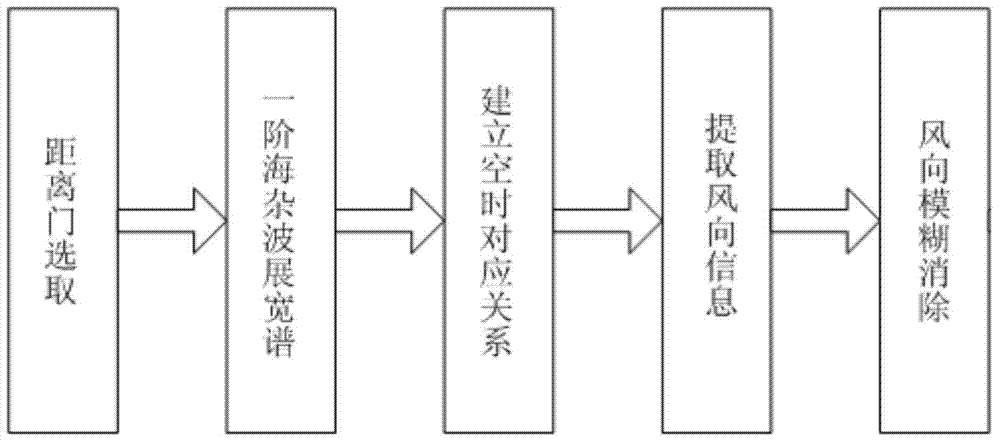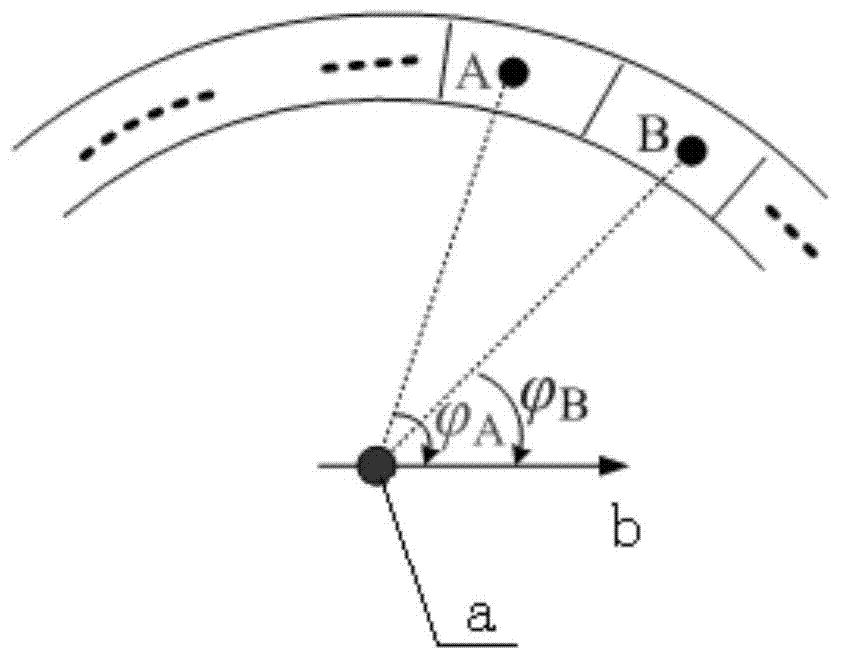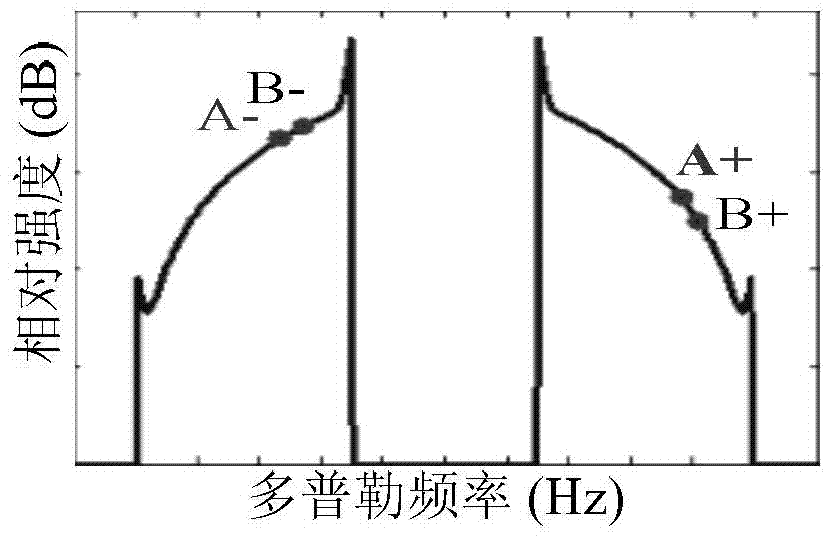Sea surface wind direction extraction method based on ship-borne high-frequency ground wave beyond visual range radar
A technology of over-the-horizon radar and sea surface wind direction, which is applied in the reflection/re-radiation of radio waves, radio wave measurement systems, and the use of re-radiation. High resolution, simple system, easy to achieve
- Summary
- Abstract
- Description
- Claims
- Application Information
AI Technical Summary
Problems solved by technology
Method used
Image
Examples
specific Embodiment approach 1
[0024] Specific implementation mode one: the following combination figure 1 Describe this embodiment, the sea surface wind direction extraction method based on ship-borne high-frequency ground wave over-the-horizon radar described in this embodiment, the specific process of this method is:
[0025] Step 1. Select a range gate, and use a single receiving array element to obtain the first-order sea clutter spread spectrum in a range gate;
[0026] Step 2, establishing the space-time correspondence relationship of the first-order sea clutter broadened spectrum, and obtaining the space-time distribution characteristics of the first-order sea clutter broadened spectrum;
[0027] Step 3. According to the space-time distribution characteristics of the first-order sea clutter, determine the positive Bragg peak B corresponding to the incident azimuth of the sea clutter + , negative Bragg peak B - and spatial resolution;
[0028] Step 4. Obtain the relative intensity R of the positiv...
specific Embodiment approach 2
[0041] Specific implementation mode two: the following combination figure 1 This embodiment is described. This embodiment further describes Embodiment 1. The first-order sea clutter spread spectrum described in Step 1 is obtained by using a single receiving array element set on a mobile ship-borne platform.
specific Embodiment approach 3
[0042] Specific implementation mode three: the following combination figure 2 with image 3 Describe this embodiment, this embodiment will further explain Embodiment 2, the space-time distribution characteristic of the first-order sea clutter broadening spectrum described in step 2 is:
[0043]
[0044] where f d is the Doppler frequency, is the Bragg frequency, v is the velocity of the ship-borne platform, λ is the working wavelength of the radar, and g is the acceleration of gravity.
[0045] In this embodiment, through the space-time distribution characteristics of the first-order sea clutter broadening spectrum, according to the incident azimuth of the sea clutter The position and peak size of the corresponding positive and negative first-order Bragg peaks can be determined B + ,B - .
PUM
 Login to View More
Login to View More Abstract
Description
Claims
Application Information
 Login to View More
Login to View More - R&D
- Intellectual Property
- Life Sciences
- Materials
- Tech Scout
- Unparalleled Data Quality
- Higher Quality Content
- 60% Fewer Hallucinations
Browse by: Latest US Patents, China's latest patents, Technical Efficacy Thesaurus, Application Domain, Technology Topic, Popular Technical Reports.
© 2025 PatSnap. All rights reserved.Legal|Privacy policy|Modern Slavery Act Transparency Statement|Sitemap|About US| Contact US: help@patsnap.com



